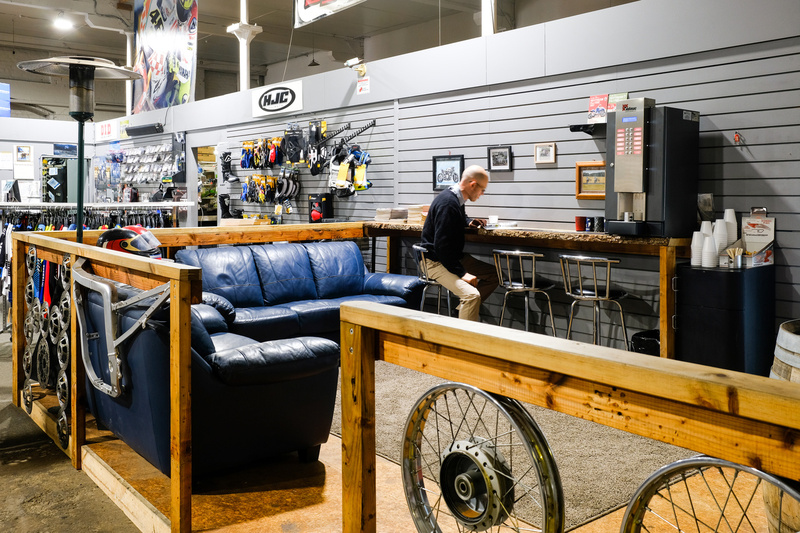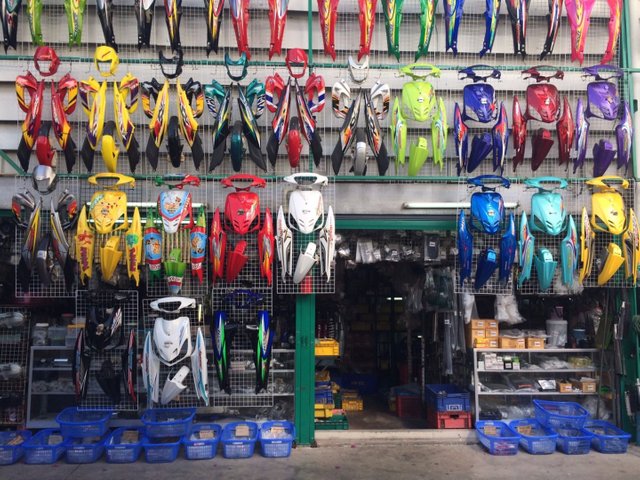Recognizing the Crucial Components of a Motorcycle: A Comprehensive Overview for Lovers
For motorbike enthusiasts looking to elevate their riding experience and ensure their bikes run smoothly, comprehending the important elements of a motorbike is paramount. Each component, from the engine's complex workings to the vital duty of the stopping mechanisms, not just impacts performance but additionally safety and comfort.
Engine Components

The camshaft plays a critical duty in controlling the timing of the engine's shutoffs, making certain the exact opening and closing necessary for effective gas and air consumption, along with exhaust expulsion. This timing is crucial to maintaining optimal engine efficiency and efficiency. In addition, the carburetor or fuel injection system, depending upon the motorcycle version, is in charge of mixing air with fuel in the proper ratio for burning.
The air conditioning system, either air or liquid-based, functions to maintain the engine's temperature within operational restrictions, avoiding getting too hot and ensuring long life - mx parts nz. Each part, diligently created and incorporated, adds to the smooth procedure of the engine, specifying the motorcycle's power outcome and total performance
Transmission System
Indispensable to the motorbike's performance, the transmission system makes certain effective power transfer from the engine to the wheels. This system comprises several essential parts, consisting of the clutch, transmission, and last drive, each playing a crucial function in converting the engine's power right into motion. The clutch, usually operated by a hand bar, offers to engage and disengage the engine from the transmission, allowing for smooth gear changes and regulated acceleration.
The gearbox, typically referred to as the transmission correct, consists of a set of equipments that cyclists can by hand shift through to readjust the bike's speed and torque outcome. These gears are prepared in a series that makes it possible for the motorcycle to accelerate smoothly and keep optimum engine efficiency across various rates. The majority of motorcycles utilize a sequential gearbox, requiring the rider to change equipments in a fixed order.
Braking Devices
While understanding the transmission system is key to using a motorcycle's power, just as essential is the capacity to manage and stop that power successfully, which is where braking devices enter play. Brakes are crucial for safety and security and efficiency, giving the rider with the essential control to browse various surfaces and conditions. Commonly, bikes feature two kinds of braking systems: disc brakes and drum brakes.
Disc brakes are a lot more widespread in modern bikes as a result of their premium efficiency. They contain a brake disc, caliper, and pads. When turned on, the caliper squeezes the brake pads versus the spinning disc, converting kinetic power right into warm, therefore reducing the wheel. This system uses much better warmth dissipation, regular performance, and improved quiting power, especially in damp conditions.
On the other hand, drum brakes, though less usual, are still located in some bikes. They function by pushing brake footwear against the inner surface of a drum attached to the wheel. While normally less reliable in warmth dissipation and quiting power, drum brakes are less complex and much more economical.
Understanding these stopping systems' nuances allows riders to maintain their bikes effectively and appreciate the design that ensures reliable and secure quiting.
Suspension and Guiding
Suspension and steering systems are essential components that dramatically affect a bike's handling and experience comfort. The suspension system, being composed of Discover More forks at the front and shock absorbers at the rear, soaks up roadway irregularities, improving stability and control. Front forks, commonly telescopic or inverted, compress and rebound to alleviate impacts, while rear shock absorbers keep tire contact with the roadway, important for traction and safety.
Guiding, centered around the handlebars, links the rider to the bike's directional control. The steering head bearings ensure smooth operation, enabling exact maneuverability. Proper alignment and maintenance of these bearings are crucial for predictable guiding reaction description and decreasing rider exhaustion.
The suspension's adjustability is one more important aspect; preload, damping, and rebound setups enable personalization to fit different riding styles and problems. This flexibility is necessary for enhancing efficiency, whether browsing metropolitan streets or tackling rugged routes. Developments like electronic suspension systems supply real-time changes, enhancing adventure high quality throughout varied surfaces.

Electric Systems
After guaranteeing a smooth and controlled ride via efficient suspension and steering systems, attention transforms to the electrical systems, a crucial element of modern bikes. These systems play a crucial function not only in starting the engine however also in powering different parts that enhance the performance and safety and security of the motorcycle.
At the heart of a motorbike's electric system is the battery, which stores electrical power necessary for starting the engine and powering supporting systems - mx parts nz. The generator or generator, combined with the rectifier-regulator, guarantees the battery stays charged while the motorbike is in operation, converting mechanical energy right into electric energy and maintaining voltage levels
The ignition system, another essential part, is responsible for firing up the air-fuel mix in the engine's cyndrical tubes. Modern motorbikes commonly make use of an electronic ignition system, using greater effectiveness and integrity contrasted to typical systems.
Illumination systems, including fronts lights, tail lights, and indications, are additionally essential, making certain presence and safety for the cyclist. Added digital elements such as sensors, control units, and shows add to innovative functions like fuel injection monitoring, anti-lock braking systems (ABDOMINAL), and electronic dashboards, further improving the riding experience.
Verdict
A comprehensive comprehension of a motorbike's necessary parts, including the engine, transmission system, braking mechanisms, suspension, steering, and electric systems, is important for enthusiasts aiming to optimize convenience, safety, and performance. Mastery of these aspects permits educated choices relating to maintenance and upgrades, eventually enhancing the riding experience. By incorporating this understanding, important source riders can guarantee their motorbikes run at peak efficiency and integrity, consequently taking full advantage of both pleasure and long life of their automobiles.
For motorcycle enthusiasts looking to raise their riding experience and ensure their bikes run efficiently, comprehending the essential parts of a motorbike is paramount.Important to the motorbike's performance, the transmission system makes certain reliable power transfer from the engine to the wheels.While understanding the transmission system is vital to using a bike's power, equally essential is the capacity to control and quit that power successfully, which is where braking systems come right into play. Typically, motorcycles feature two types of braking systems: disc brakes and drum brakes.
A complete understanding of a motorbike's important elements, consisting of the engine, transmission system, braking mechanisms, suspension, steering, and electrical systems, is indispensable for lovers intending to enhance performance, comfort, and security.
Comments on “Must-Have Motocross Gear: Raise Your Riding Experience Today”